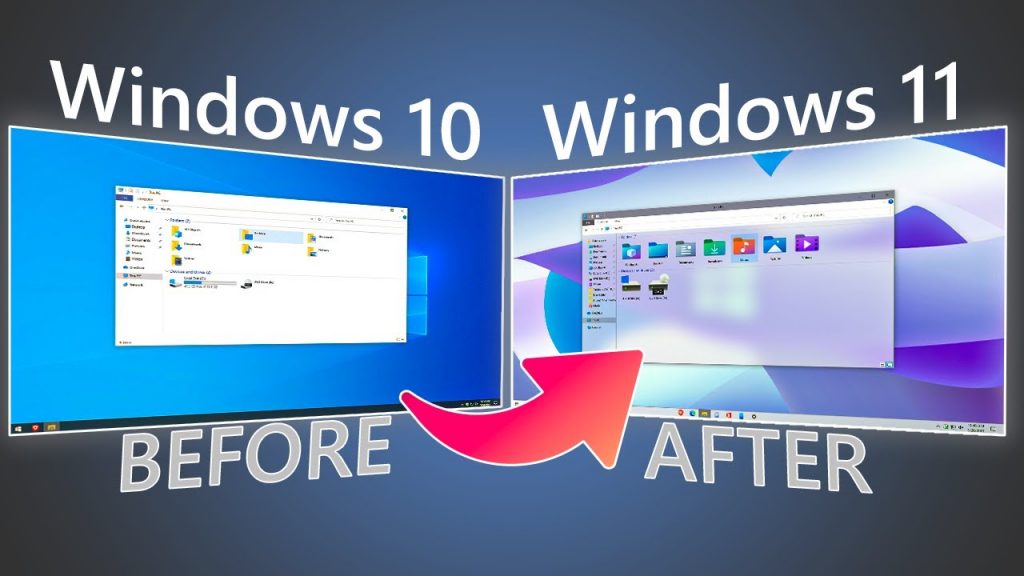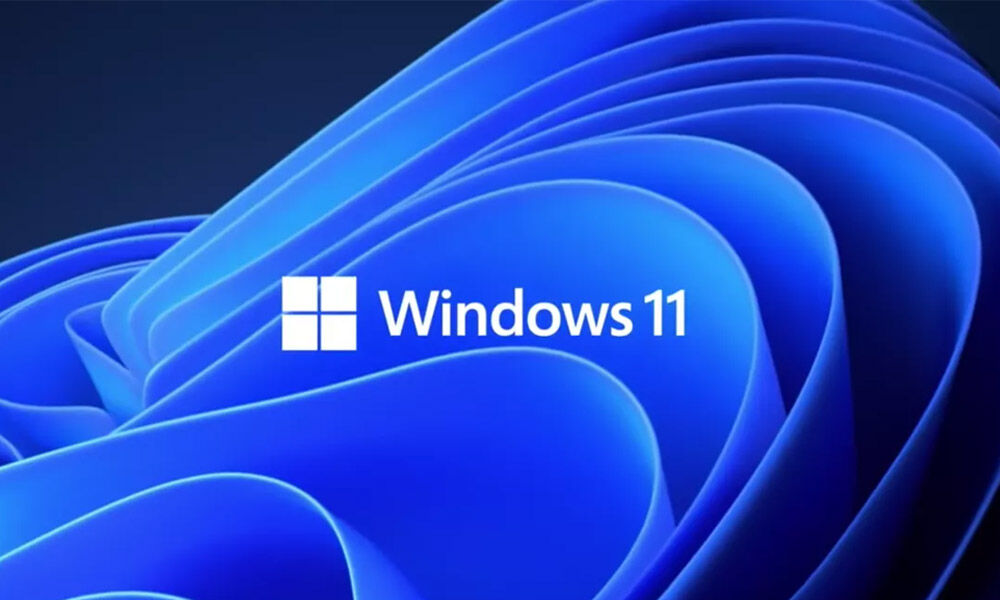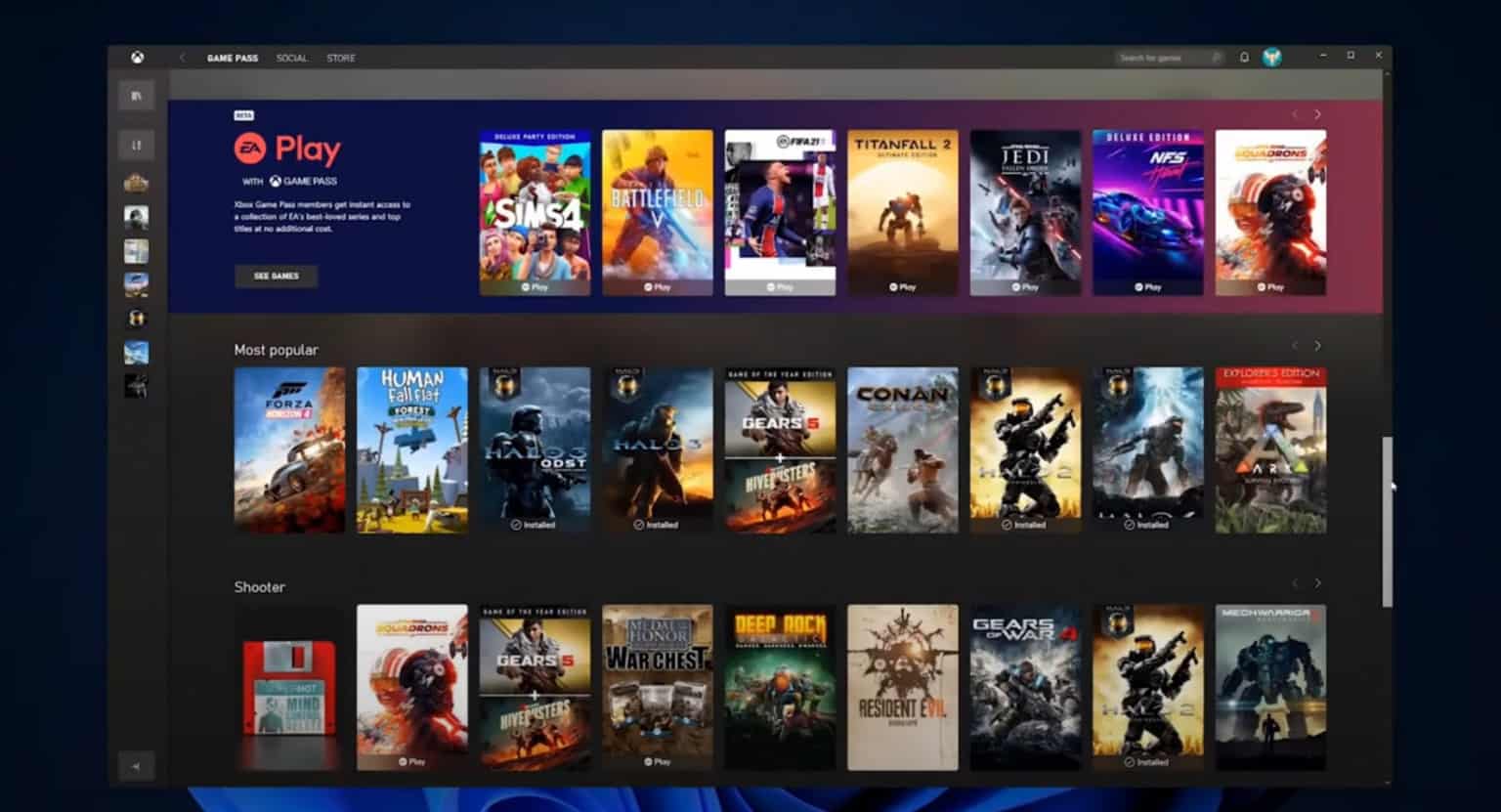If your existing Windows 10 PC is running Windows 10 20H1 or later and meets the minimum hardware specificationsit will be able to upgrade to Windows 11. The upgrade rollout plan is still being finalized, but for most devices already in use today, we expect it to be ready sometime in early 2022. Not all Windows 10 PCs that are eligible to upgrade will be offered to upgrade at the same time. To see if your PC is eligible to upgrade, refer to our knowledge base for a list of tested systems.
Once the upgrade rollout has started, you can check if it is ready for your device by going to Settings/Windows Updates. Similar to how end users are notified when updates are available in Windows 10, end users will see an indication in the notification areas of the taskbar in the bottom right, that the upgrade is available. More information on how that is presented will be available at a later date. Additional desktop notification options may be also be added at a later date.
Warren noted that he rarely used the Widgets panel or Microsoft Teams, citing that he preferred the weather display that later versions of Windows 10 offered, and didn't use Teams to communicate with his friends and family. He also acknowledged the expansion of Microsoft Store to include more "traditional" desktop applications. Overall, he concluded that "I wouldn't rush out to upgrade to Windows 11, but I also wouldn't avoid it. After all, Windows 11 still feels familiar and underneath all the UI changes, it's the same Windows we've had for decades."
If your existing Windows 10 PC is running Windows 10 20H1 or later and meets the minimum hardware specifications it will be able to upgrade to Windows 11. To see if your PC is eligible to upgrade, refer to the specifications here. Internet Explorer has been replaced by the Chromium-based Microsoft Edge as the default web browser, and Microsoft Teams is integrated into the Windows shell.
Microsoft also announced plans to allow more flexibility in software that can be distributed via Microsoft Store, and to support Android apps on Windows 11 . Cunningham concluded that "as I've dug into and learned its ins and outs for this review, I've warmed to it more", but argued that the OS was facing similar "public perception" issues to Windows Vista and Windows 8. A redesigned user interface is present frequently throughout the operating system, building upon Fluent Design System; translucency, shadows, a new color palette, and rounded geometry are prevalent throughout the UI. A prevalent aspect of the design is an appearance known as "Mica", described as an "opaque, dynamic material that incorporates theme and desktop wallpaper to paint the background of long-lived windows such as apps and settings".
In October 2019, Microsoft announced "Windows 10X", a future edition of Windows 10 designed exclusively for dual-touchscreen devices such as the then-upcoming Surface Neo. Legacy Windows applications would also be required to run in "containers" to ensure performance and power optimization. Microsoft stated that it planned to release Windows 10X devices by the end of 2020. Windows 11, unfortunately, ditches a couple of its best tablet- and touch-friendly features.
Most importantly, you can no longer swipe in from the left to open the task-switching view, a gesture I use all the time on my Surface Go tablet. You can no longer swipe down from the top to close an app, either. This omission is less of a big deal because you can still hit the X in the window's upper right corner as you'd do in desktop mode. Again, though, for a handheld device, the down-swipe is more direct and requires less dexterity.
There are, however, new three-finger swipe gestures to show the Task View and to minimize and app on the desktop. And you can, of course, use the Task View button in the Taskbar, but that's not as immediate as a swipe of the thumb. I'd argue that switching tasks is more important to tablet users than accessing Widgets, the new result of that gesture, too. Perhaps the most important thing to know about the release of Windows 11 is that we should expect it to change significantly over the next few years.
I've been using beta versions of Windows 11 for a month in the lead-up to writing this review, and it seems like every few days there's a minor new feature or redesigned app to check out. We may not see that feature fully realized in Windows until next year. As part of the minimum system requirements, Windows 11 only runs on devices with a Trusted Platform Module 2.0 security coprocessor. According to Microsoft, the TPM 2.0 coprocessor is a "critical building block" for protection against firmware and hardware attacks. In addition, Microsoft now requires devices with Windows 11 to include virtualization-based security , hypervisor-protected code integrity , and Secure Boot built-in and enabled by default.
The operating system also features hardware-enforced stack protection for supported Intel and AMD processors for protection against zero-day exploits. In January 2021, it was reported that a job listing referring to a "sweeping visual rejuvenation of Windows" had been posted by Microsoft. A visual refresh for Windows, developed under the codename "Sun Valley", was reportedly set to re-design the system's user interface. If the Microsoft Surface family of products isn't your style though, other brands like Dell, Asus and HP have all released pages online that specify what devices are Windows 11 ready. Note that many won't come with the new operating system installed, but as they all meet the minimum system requirements, you can simply buy the laptop or 2-in-1 as normal and then update it yourself. Windows 11 has higher technical requirements than Windows 10, is possible to install Windows 11 on devices that don't meet the minimum requirements.
Upgrading unsupported hardware to Windows 11 will require you to install the update manually using an ISO. There is a different set of minimum minimum requirements your PC will have to meet including 4GB of RAM, 64GB of storage space, and two-core 64-bit 1 GHz processor. Microsoft commercially released Windows 11 on Oct. 4, and noted that it's a free upgrade for Windows 10 systems that meet the new operating system's minimum requirements.
Individuals with Windows 10 systems that pass Windows 11's stringent hardware requirements will be offered the new OS via the Windows Update mechanism. It'll replace the underlying Windows 10 bits with Windows 11 bits via an automated "in-place upgrade" approach. However, it's possible for users to decline the upgrade and continue with Windows 10.
If you want to open the widget on Windows 11, you will find the Widget icon placed right next to the search option. The Widget panel is basically the same as News and Interest section on the Windows 10 Taskbar. The updated widgets in Windows 11 can display calendar entries, finance updates, latest news, photos from OneDrive, sports, Microsoft To-Do tasks, weather, and more. You can personalize the widget experience by adding or removing widgets, re-arranging, resizing, and customizing the content. Right now, Windows 11 only features widgets from Microsoft, but third-party widgets could be coming in the future iterations of the operating system.
Microsoftunveiled the next big version of its desktop operating system—Windows 11—last month. The new version of Windows comes with a ton of new visual changes, UI improvements, and improved performance. In the Windows 11 operating system, the Start Menu and icons in the Taskbar are centrally aligned. It also includes an updated notification centre and Quick Settings panel. Windows 11 also includes a newer File Explorer UI, various themes, a new startup sound, and a ton of other improvements. Microsoft has already released two Windows 11 Insider Preview Builds for the Dev Channel, which means that you can try it out before its final public build is rolled out.
Task View, a feature introduced in Windows 10, features a refreshed design, and supports giving separate wallpapers to each virtual desktop. When a display is disconnected in a multi-monitor configuration, the windows that were previously on that display will be minimized rather than automatically moved to the main display. If the same display is reconnected, the windows are restored to their prior location. The taskbar's buttons are center-aligned by default, and it is permanently pinned to the bottom edge of the screen; it cannot be moved to the top, left, or right edges of the screen as in previous versions of Windows. The "Widgets" button on the taskbar displays a panel with Microsoft Start, a news aggregator with personalized stories and content (expanding upon the "news and interests" panel introduced in later builds of Windows 10). Microsoft Teams is similarly integrated with the taskbar, with a pop-up showing a list of recent conversations.
Windows 11 has a new Widget panel, which shows you tiles for news, weather, stock quotes, sports scores, and more. It's not entirely new since the News and Interests Taskbar popup that arrived in Windows 10 recently is exceedingly similar. To see the same info in Windows 11, you have to click on the Widgets icon in the Taskbar.
In addition to Microsoft-produced first-party tiles, third-party developers can offer content through Windows 11's widgets, too. Touch screen users can easily swipe in from the left to open them and you can full-screen the widget panel if you want a bigger view. File Explorer is a good example of Windows 11's new look, particularly its updated left panel controls and folder icons. Note the simplified ribbon along the top, which is far less busy and distracting than the previous File Explorer's. The New button at the top left works for new folders or documents supported by your apps, and the same viewing options for files are available. The overflow menu offers file compression, selection, and Properties options, as well as the old Folder Options dialog.
The right-click context menus, which have grown longer and longer over the years, get shorter, smarter, and clearer in Windows 11. Anyone with one of the newer chips should have no trouble installing Windows 11 via Windows Update. Microsoft made a downloadable ISO disk image file for the beta Insider version available for installing Windows 11, allowing in-place upgrades or clean installations on a PC or in a virtual machine. A similar installation option is now available for the release version of Windows 11 via the Microsoft's Download Windows 11 page.
Some sources have reported that installing the OS with the ISO installer bypasses the system's hardware requirements, but that's not advisable as you may not get future OS updates if you install it on unsupported hardware. According to Microsoft, if users have these specifications, they can try out many Windows 11 tools with the developer's program. This includes a revamped Start, Taskbar, and Action Centre experience as well as a new Microsoft Store app, redesigned settings, lock screen, File Explorer and more. Also warned that some features may not work, and the user may have to face unknown issues. As an update, Microsoft will no longer include Cortana in the taskbar and the Internet Explorer browser in Windows 11 Update. Apart from this, S Mode is now available only for Windows 11 Home Edition.
12 Windows 11 system requirements13 How to install Windows 1114 Windows 11 launch date15 F.A.Q. To put it precisely, if your PC or laptop has a 7th Gen Intel Core or AMD Zen 1 processor and meets other hardware requirements, it will run the Windows 11 preview build. The stable build of Windows 11 will, however, not support these two CPU families, according to what Microsoft has necessitated at this moment. But Microsoft may change its stance at the time of release depending on the feedback that it will get on the Windows 11 preview build. The Windows 11 preview build brings a new Start menu, new icons, new startup sound, and other visual changes, per what Microsoft outlined at the event.
There is also a new File Explorer that replaces the ribbon with a new command bar that should simplify tools for you. The notification centre is also revamped, along with rounded edges for windows, new volume flyouts, and the Windows 11 widget that brings all necessary yet personalised information in one place and is available via the taskbar. The Windows 11 in this preview build supports new themes, including new wallpapers and both light and dark modes. Ever since Microsoft announced its next Windows OS, there are speculations and fears that it is a must to upgrade the system hardware or buy a new laptop that fulfills the minimum system requirements of Windows 11.
But Microsoft has made it clear that you can either choose to install Windows 11 manually on your Windows 10 devices or continue with the older OS. Windows 11 will arrive via Windows Update on Windows 10, but to get that, you would have to manually check for it on your systems. That means Microsoft is giving you full freedom in the case of downloading Windows 11. You can use the PC Health Check app to determine if your device is eligible to upgrade to New Windows. Many PCs that are less than four years old will be able to upgrade to New Windows. They must be running the most current version of Windows 10 and meet the minimum hardware requirements.
You can refer to our knowledge base for a list of tested systems to determine if your device eligible to upgrade to Windows -11. Many PCs that are less than four years old will be able to upgrade to Windows 11. They must be running 20H1 or later version of Windows 10 and meet the minimum hardware requirements to receive the Windows 11 upgrade. Microsoft is adding Snap Layouts, Snap Groups, and Virtual Desktops to Windows 11 to provide a more powerful multitasking experience. If you want to open the Snap Layout, you will need to hover your mouse over any window's maximize button to see available snap layouts, and then click on a zone to snap the window to.
You can also access Snap Layouts with the keyboard shortcut key combo WIN + Z. You can even snap at least 2 apps on your screen with the help of Snap Groups. Apart from this, if you want to switch to other apps on windows or create a new Virtual Desktop, you can do it by pressing WIN + Tab keys. You can even customise the backgrounds for each of your Virtual Desktops. Original equipment manufacturers can still ship computers without a TPM 2.0 coprocessor upon Microsoft's approval.
Some third-party software may refuse to run on unsupported configurations of Windows 11. At least 16GB of RAM The basic system requirements of Windows 11 differ significantly from Windows 10. Windows 11 only supports 64-bit systems such as those using an x86-64 or ARM64 processor; IA-32 processors are no longer supported. Thus, Windows 11 is the first ever consumer version of Windows not to support 32-bit processors and 16-bit software .
The minimum RAM and storage requirements were also increased; Windows 11 now requires at least 4GB of RAM and 64GB of storage. The compatibility list includes the Intel Core i7-7820HQ, a seventh-generation processor used by the Surface Studio 2, although only on devices that shipped with DCH-based drivers. Windows 11 SE was announced on November 9, 2021, as an edition exclusively for low-end devices sold in the education market, and a successor to Windows 10 S.
It is bundled with applications such as Microsoft Office for Microsoft 365, Minecraft Education Edition, and Flipgrid, while OneDrive is used to save files by default. Windows 11 SE does not include Microsoft Store; third-party software is provisioned or installed by administrators. Windows 11, the first major Windows release since 2015, builds upon its predecessor by revamping the user interface to follow Microsoft's new Fluent Design guidelines. The redesign, which focuses on ease of use and flexibility, comes alongside new productivity and social features and updates to security and accessibility, addressing some of the deficiencies of Windows 10. Citing security considerations, the system requirements for Windows 11 were increased over Windows 10. While the OS can be installed on unsupported processors, Microsoft does not guarantee the availability of updates.
Windows 11 also drops support for 32-bit x86 CPUs and devices which use BIOS firmware. Minor complaints aside, we like to see Microsoft giving its marquee software some attention. For the last few years, the company has focused more on its Azure cloud computing services—justifiably given that business's profitability. Windows 11 brings slick new looks, useful new tools, updated default apps, extra capabilities, and performance advances.
Perhaps that's enough to lure away some Chrome OS users or Mac users. Regardless, it's still early days for the desktop OS that's used on 1.3 billion PCs, so we look forward to Microsoft fine-tuning and perfecting Windows 11's design in future updates. Pinned app buttons (they're larger than icons but smaller than Windows 10's tiles) are at the top of its panel.
Recent and frequent apps and documents are in a section below them. The Start menu's new mini-tiles are still good for touch input, but you lose info that live tiles offer, annoying as those could sometimes be. Another quibble I have with the new Start menu is that it's harder to get to the All Apps view than in Windows 10.




























